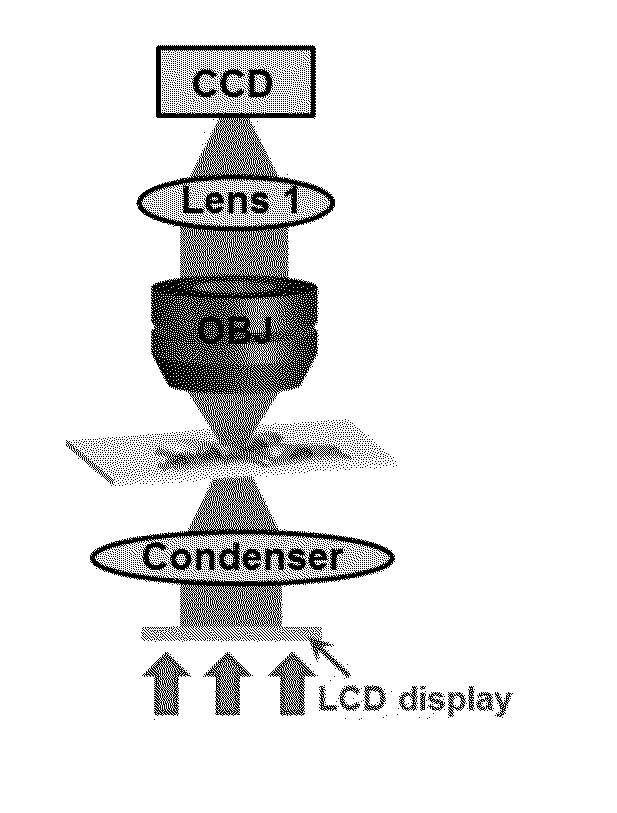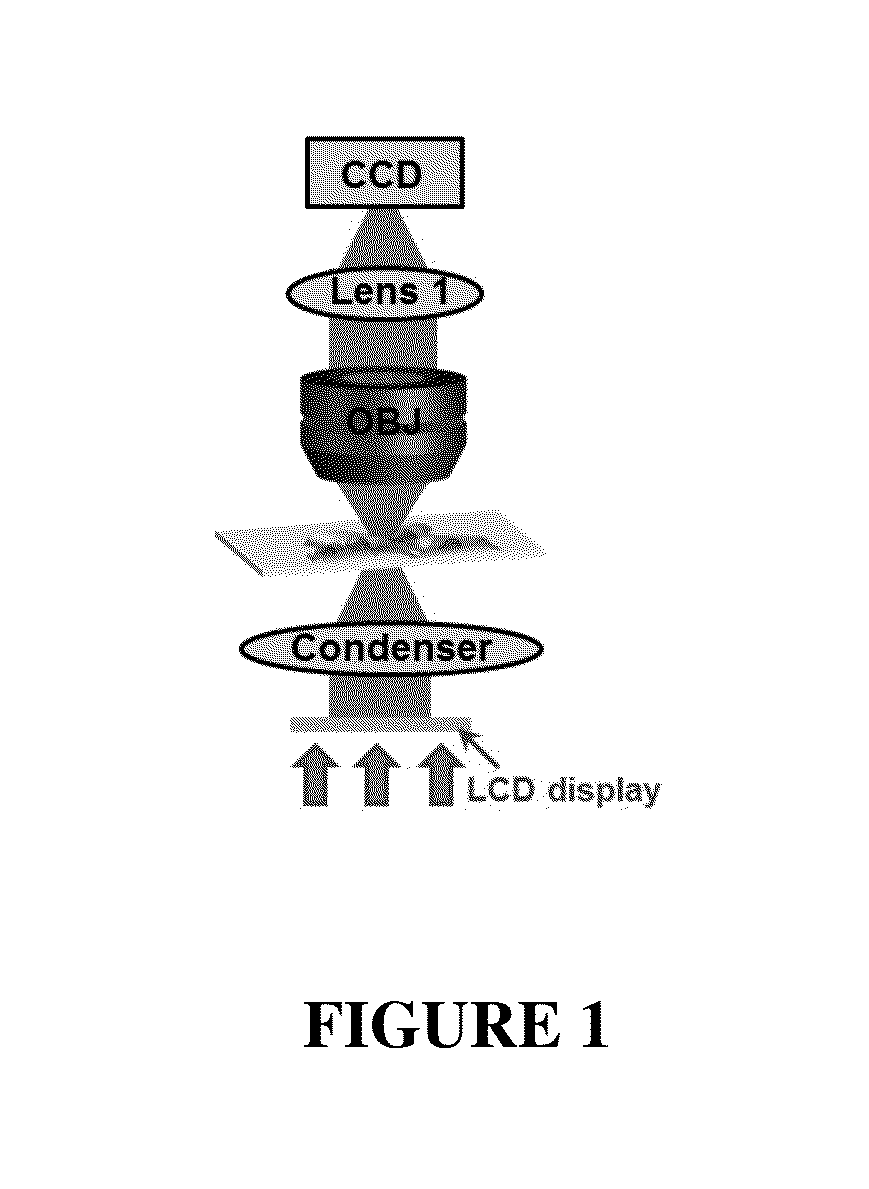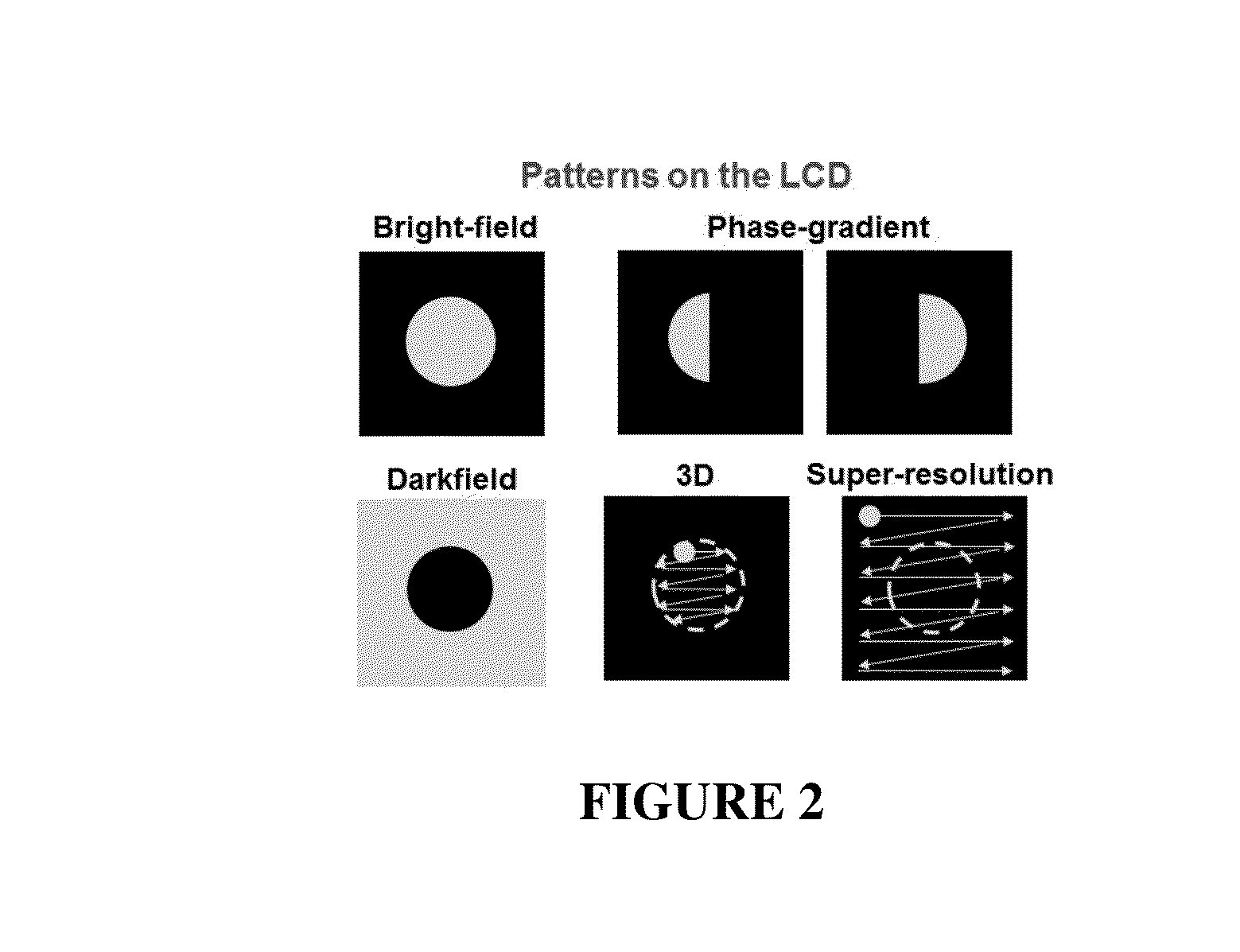3D Microscopy With Illumination Engineering
a technology of illumination engineering and microscope, applied in the field of microscope/imaging assembly with illumination engineering, can solve the problems of mutual exclusiveness of cases, high cost of accessories, and inability to meet the needs of all microscopes
- Summary
- Abstract
- Description
- Claims
- Application Information
AI Technical Summary
Benefits of technology
Problems solved by technology
Method used
Image
Examples
example 1
Microscopy Illumination Engineering Using a Low-Cost Liquid Crystal Display
[0049]In general, illumination engineering is important for obtaining high-resolution, high-quality images in microscope settings. In a typical microscope, the condenser lens provides sample illumination that is uniform and free from glare. The associated condenser diaphragm can be manually adjusted to obtain the optimal illumination numerical aperture. In this Example, a programmable condenser lens for active illumination control is disclosed. In an exemplary prototype setup, an inexpensive liquid crystal display was utilized as a transparent spatial light modulator, and it was placed at the back focal plane of the condenser lens. By setting different binary patterns on the display, one can actively control the illumination and the spatial coherence of the microscope platform. As such, the use of this scheme for multimodal imaging, including bright-field microscopy, darkfield microscopy, phase-contrast micro...
example 2
Illumination Control / Computational Imaging: Multimodal Microscopy Using a Low-Cost Liquid Crystal Display
[0077]Traditional condenser lenses should be physically adjusted to meet the needs of different microscopy modalities. But a low-cost liquid crystal display (LCD), serving as a transparent spatial light modulator in a microscopy platform, enables active illumination control for multiple imaging approaches.
[0078]The condenser lens system, typically consisting of a high-numerical-aperture (NA) lens and a diaphragm at the lens' back focal plane, is an important component of a traditional microscope. The diaphragm allows for manual adjustment of the illumination aperture, which is important because various microscopy techniques require vastly different condenser illumination. Meeting these requirements is currently a matter of physically adjusting the condenser diaphragm, or else using specialized condenser apertures.
[0079]As noted above, various microscopy techniques require vastly ...
example 3
[0100]This Example provides various embodiments to the imaging assemblies discussed above. As noted in Examples 1 and 2 above, FIG. 9 shows the imaging assembly having a light source 1, a condenser 3, the sample 4, the objective or other detection optics 5, the tube lens or camera adapter 8, and the imaging sensor 10. In this embodiment, the SLM 2 (e.g., digitally controlled LCD or DMD 2) is positioned between the light source 1 and the condenser 3 (e.g., between the light source 1 and the backfocal plane of the condenser 3) for imaging purposes (e.g., for 3D tomographic imaging using computational image reconstruction with brightfield or fluorescence illumination; for illumination modulation and 3D tomography).
[0101]In an alternative embodiment and as shown in FIG. 10, the imaging assembly can include the SLM 2 (e.g., digitally controlled LCD or DMD 2) positioned at the backfocal plane of the detection optic element 5 (e.g., the objective or other detection optics 5) for imaging pu...
PUM
 Login to View More
Login to View More Abstract
Description
Claims
Application Information
 Login to View More
Login to View More - R&D
- Intellectual Property
- Life Sciences
- Materials
- Tech Scout
- Unparalleled Data Quality
- Higher Quality Content
- 60% Fewer Hallucinations
Browse by: Latest US Patents, China's latest patents, Technical Efficacy Thesaurus, Application Domain, Technology Topic, Popular Technical Reports.
© 2025 PatSnap. All rights reserved.Legal|Privacy policy|Modern Slavery Act Transparency Statement|Sitemap|About US| Contact US: help@patsnap.com



